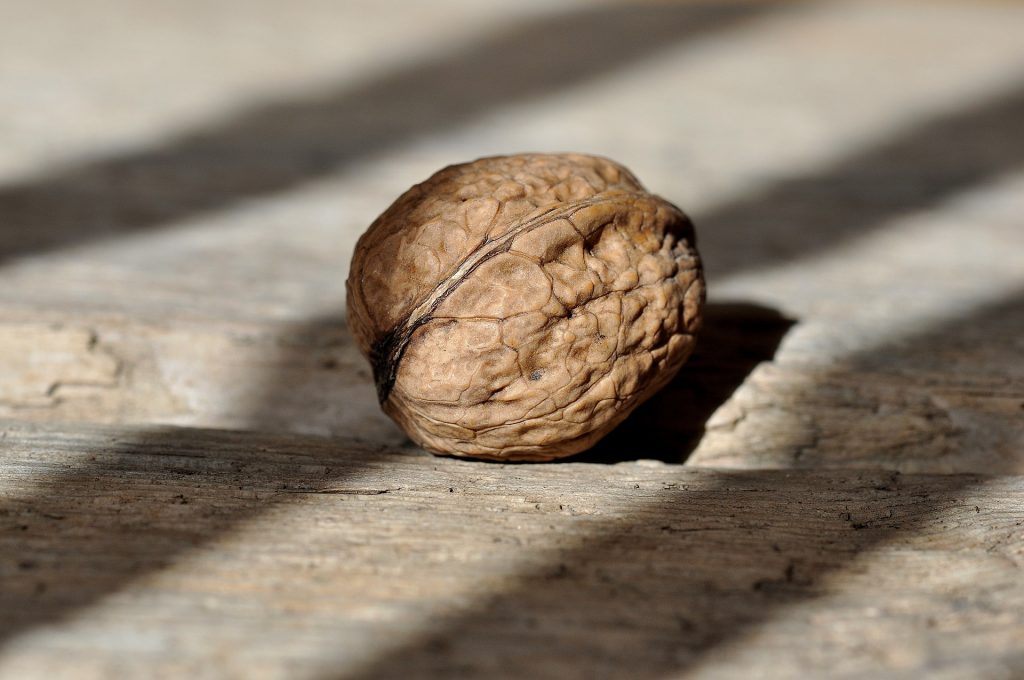 Alpha linolenic acid (ALA, C18:3 (n-3)) is an essential fatty acid that has vitamin like effects in humans. Intakes of ALA must be balanced with intake of the other essential fatty acid linoleic acid (LA, C18:2 (n-6)), and the dietary ratio that is required to provide optimal health is around 3 grams of LA to each gram of ALA. The Western diet contains too much LA, and too little ALA, and as a result there exists a potential for the diet to cause a significant pro-inflammatory effect in humans. This inflammation may be a cause of cardiovascular disease, and may contribute to general cellular degeneration and disease. Studies have investigated the association between ALA and cardiovascular disease, but the association is not clear. For example, in one large scale study, during a 17 year follow up period there was a weak positive association in men and a weak U-shaped association in women between the ALA content of adipose tissue and ALA intake and the risk of myocardial infarction, but they were not statistically significant.
Alpha linolenic acid (ALA, C18:3 (n-3)) is an essential fatty acid that has vitamin like effects in humans. Intakes of ALA must be balanced with intake of the other essential fatty acid linoleic acid (LA, C18:2 (n-6)), and the dietary ratio that is required to provide optimal health is around 3 grams of LA to each gram of ALA. The Western diet contains too much LA, and too little ALA, and as a result there exists a potential for the diet to cause a significant pro-inflammatory effect in humans. This inflammation may be a cause of cardiovascular disease, and may contribute to general cellular degeneration and disease. Studies have investigated the association between ALA and cardiovascular disease, but the association is not clear. For example, in one large scale study, during a 17 year follow up period there was a weak positive association in men and a weak U-shaped association in women between the ALA content of adipose tissue and ALA intake and the risk of myocardial infarction, but they were not statistically significant.

Flax seeds and walnuts are good sources of alpha linolenic acid. Increasing intakes of these foods, or their oils, may provide significant health effects. In particular, increasing the alpha linolenic acid content of the diet may provide an anti-inflammatory effect. Some individuals are unable to efficiently process alpha linolenic acid into the metabolically active eicosapentaenoic acid that provides the anti-inflammatory effect. This relates to a genetic deficiency of the delta 6-desaturase enzyme required for the conversion. A better alternative to alpha linolenic acid may therefore be a source of pre-formed eicosapentaenoic acid. Cold water fish contain eicosapentaenoic acid in their oils, and so these oils may be a better health strategy. For vegetarians, algal oils can provide docosahexaenoic acid, and this can easily be converted to eicosapentaenoic acid. Both fish and algal oils therefore provide a source of anti-inflammatory compounds for those that cannot utilise alpha linolenic acid.
Weak associations between nutrients and health effects are commonly reported in the nutritional literature, and because of the subtle ways that nutrition can work they should not be dismissed. The literature clearly shows a role for ALA in the control of inflammation, but there are a number of factors that can weaken its effects and these must be considered. Firstly, it is the ratio of ALA to LA that is important not the absolute intakes of both. Therefore increasing ALA intake may not be effective if it is also accompanied by a concomitant intake of LA. Likewise, very high background intakes of LA will negate any beneficial effects from ALA because the ratio of the two will not approach that required to provide health. Secondly, many individuals have been shown to have a deficiency of the delta 6-desaturase converting enzyme required to convert ALA to the metabolically active metabolites that have cellular effects. In such individuals dietary ALA may not be beneficial to the health.
Eat Well, Stay Healthy, Protect Yourself
RdB
